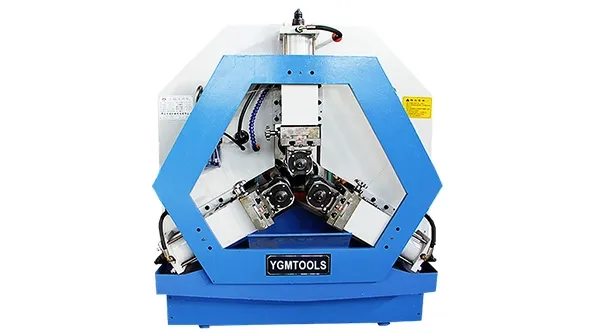
-
 Afrikaans
Afrikaans -
 Albanian
Albanian -
 Amharic
Amharic -
 Arabic
Arabic -
 Armenian
Armenian -
 Azerbaijani
Azerbaijani -
 Basque
Basque -
 Belarusian
Belarusian -
 Bengali
Bengali -
 Bosnian
Bosnian -
 Bulgarian
Bulgarian -
 Catalan
Catalan -
 Cebuano
Cebuano -
 Corsican
Corsican -
 Croatian
Croatian -
 Czech
Czech -
 Danish
Danish -
 Dutch
Dutch -
 English
English -
 Esperanto
Esperanto -
 Estonian
Estonian -
 Finnish
Finnish -
 French
French -
 Frisian
Frisian -
 Galician
Galician -
 Georgian
Georgian -
 German
German -
 Greek
Greek -
 Gujarati
Gujarati -
 Haitian Creole
Haitian Creole -
 hausa
hausa -
 hawaiian
hawaiian -
 Hebrew
Hebrew -
 Hindi
Hindi -
 Miao
Miao -
 Hungarian
Hungarian -
 Icelandic
Icelandic -
 igbo
igbo -
 Indonesian
Indonesian -
 irish
irish -
 Italian
Italian -
 Japanese
Japanese -
 Javanese
Javanese -
 Kannada
Kannada -
 kazakh
kazakh -
 Khmer
Khmer -
 Rwandese
Rwandese -
 Korean
Korean -
 Kurdish
Kurdish -
 Kyrgyz
Kyrgyz -
 Lao
Lao -
 Latin
Latin -
 Latvian
Latvian -
 Lithuanian
Lithuanian -
 Luxembourgish
Luxembourgish -
 Macedonian
Macedonian -
 Malgashi
Malgashi -
 Malay
Malay -
 Malayalam
Malayalam -
 Maltese
Maltese -
 Maori
Maori -
 Marathi
Marathi -
 Mongolian
Mongolian -
 Myanmar
Myanmar -
 Nepali
Nepali -
 Norwegian
Norwegian -
 Norwegian
Norwegian -
 Occitan
Occitan -
 Pashto
Pashto -
 Persian
Persian -
 Polish
Polish -
 Portuguese
Portuguese -
 Punjabi
Punjabi -
 Romanian
Romanian -
 Russian
Russian -
 Samoan
Samoan -
 Scottish Gaelic
Scottish Gaelic -
 Serbian
Serbian -
 Sesotho
Sesotho -
 Shona
Shona -
 Sindhi
Sindhi -
 Sinhala
Sinhala -
 Slovak
Slovak -
 Slovenian
Slovenian -
 Somali
Somali -
 Spanish
Spanish -
 Sundanese
Sundanese -
 Swahili
Swahili -
 Swedish
Swedish -
 Tagalog
Tagalog -
 Tajik
Tajik -
 Tamil
Tamil -
 Tatar
Tatar -
 Telugu
Telugu -
 Thai
Thai -
 Turkish
Turkish -
 Turkmen
Turkmen -
 Ukrainian
Ukrainian -
 Urdu
Urdu -
 Uighur
Uighur -
 Uzbek
Uzbek -
 Vietnamese
Vietnamese -
 Welsh
Welsh -
 Bantu
Bantu -
 Yiddish
Yiddish -
 Yoruba
Yoruba -
 Zulu
Zulu
Exploring Different Categories and Applications of Thread Rolling Products for Various Industries
Types of Thread Rolling Products
Thread rolling is a manufacturing process that involves converting a blank workpiece into a threaded part by deforming the material. This method is widely used in the production of various threaded components due to its numerous advantages, including high dimensional accuracy, good surface finish, and enhanced mechanical properties. Understanding the types of thread rolling products and their applications can offer insights into the versatility of this manufacturing technique.
1. Screws and Bolts
One of the most common types of thread-rolled products is screws and bolts. These fasteners are essential in countless applications, ranging from construction to machinery. The thread rolling process allows for a stronger and more durable product due to the cold working that re-aligns the material’s grain structure, enhancing its strength. Furthermore, the improved surface finish obtained through thread rolling reduces the risk of friction-related failures, making these fasteners ideal for critical applications.
2. Studs
Studs are another significant category of thread-rolled products. Typically, studs are used to create connections between two components in various assemblies, providing flexibility in design. They can be produced in different lengths and diameters, accommodating a wide range of engineering requirements. Thread rolling increases the reliability of studs by ensuring consistent thread quality and integrity, which is crucial in preventing failures in high-stress environments.
3. Nuts
Nuts, which are used in conjunction with bolts and screws, are also commonly manufactured using thread rolling. The process ensures that the internal threads of the nuts are precise and consistent, which is vital for their functioning in secure connections. The enhanced surface quality achieved through thread rolling also helps nuts to withstand higher loads and prevent wear and tear, making them suitable for demanding applications in automotive and aerospace sectors.
types of thread rolling products

4. Rivets
Thread rolling is not limited to standard fasteners; it is also employed in the production of rivets. Rivets are used to permanently join metal parts together in structural applications. The thread rolling process for rivets typically involves creating a threaded section that allows for a robust mechanical connection when joined with a nut or another element. The resulting product has increased strength and resistance to shear forces, making it ideal for critical structural applications.
5. Threaded Rods
Threaded rods, which are essentially long metal rods with continuous threads along their length, are another type of thread-rolled product. These rods are extensively used in construction, machinery, and automotive applications as anchor bolts or for joining structural elements together. The thread rolling process enhances the mechanical properties of these rods, enabling them to handle significant loads and resist failure under stress.
6. Custom Threaded Components
Additionally, thread rolling is highly adaptable, allowing manufacturers to create custom threaded components tailored to specific applications. Industries such as aerospace, medical, and renewable energy often require specialized threaded parts that meet stringent quality and performance standards. The versatility of thread rolling technology enables manufacturers to meet these diverse needs, resulting in a broad range of unique products.
Conclusion
Thread rolling is a vital manufacturing technique that produces a variety of high-quality threaded products, such as screws, bolts, studs, nuts, rivets, and threaded rods. The benefits of this process, including enhanced strength, superior surface finish, and precise dimensions, make it an attractive option for a myriad of industries. As technology advances, the scope for thread rolling continues to expand, paving the way for innovative products and applications in the future.
